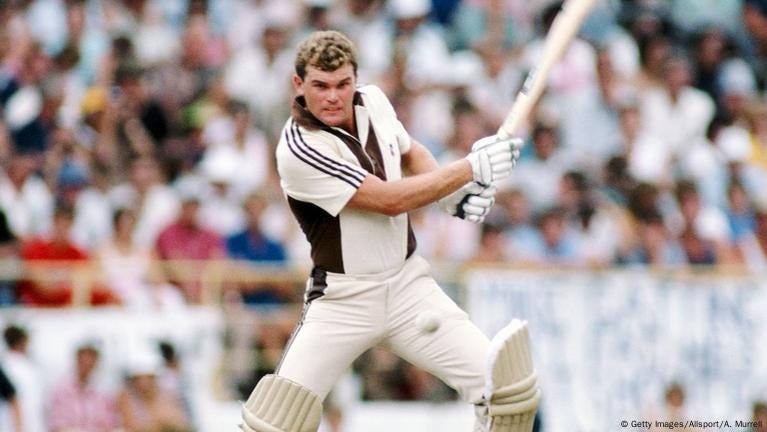The Fab 4 and a Martin Crowe story.
I planned on writing something on cricket’s aging Fab Four: Virat Kohli, Steven Smith, Joe Root, and Kane Williamson.
I still am, but I found myself distracted by another cricket legend, one I remember fondly. Martin Crowe coined the band’s label and wrote about the quartet in 2014. It proved insightful profiling from a masterful mind.
Crowe's original article was remarkably prescient. He identified four young batsmen—Kane Williamson, Virat Kohli, Joe Root, and Steve Smith—at that time, all in their early twenties, as cricket's next generation of batting excellence. Each had overcome early struggles to establish themselves in Test cricket. Their statistical trajectories were similar, with Root leading with an average just over 50, while the others loitered around 40.
Crowe also anticipated their leadership qualities, saying, “all would captain their countries,” and, “they would trade the world’s No. 1 ranking between them.” He slated: exceptional talent, fierce ambition, and the mental fortitude to overcome technical weaknesses would shape their paths. Interestingly, he specifically noted Kohli’s white-ball leaning might affect his Test performances—a prediction that proved partially true in the following years.
A decade later, Crowe’s predictions have largely materialised. At different points, all four have dominated Test batting, each achieving the top ranking while leading their nations. Together, they have collectively redefined batting excellence in the modern era.
I don’t need to tell you, but I will; Martin Crowe was a wonderful player, the last great bat-down right-hander (I guess Viv is in that conversation). Pakistan great Wasim Akram said he was the best batter he bowled to. High praise indeed.
Perfection and poise permeated Crowe’s every move. The body lines at address aligned eloquently to his footwork and head position. Has anyone’s eyes been more geometrically level at release? Has there been a more natural stance?
Crowe's bat swing tracked outside back and perfectly down the line to impact. It rarely scaled above the hips and consistently maintained a speed that delivered repeatable control and power. I was obsessed with Crowe's method. It seemed as if God gave him hands to bat. There is much to learn watching others; I will always maintain that self-discovery trumps the manuals.
And the signature shots? Carl Hooper had too many; I didn’t have enough. Crowe, though?
Crowe possessed an on-drive to rival Greg Chappell; outside, to square, then inside. It was wonderful. The on-drive demands balance, footwork, and a perfect bat swing. I managed one in 177 games!
Then there was a ballerina-like swivel pull and hook. And a roll-over cut shot that rarely missed the gap. Crowe’s cover drive looked like he knew what was coming before it did, his positioning to the bounce point and line was as claustrophobic as a London bus.
Spinners? Crowe quietly dominated them, with a combination of fleet feet and short-arm pummeling—a la Graham Gooch.
This brings me to the anecdote. It has a hint of self-congratulatory tone; I normally deal in a more self-deprecating mood, so I hope you’ll bear with me.



